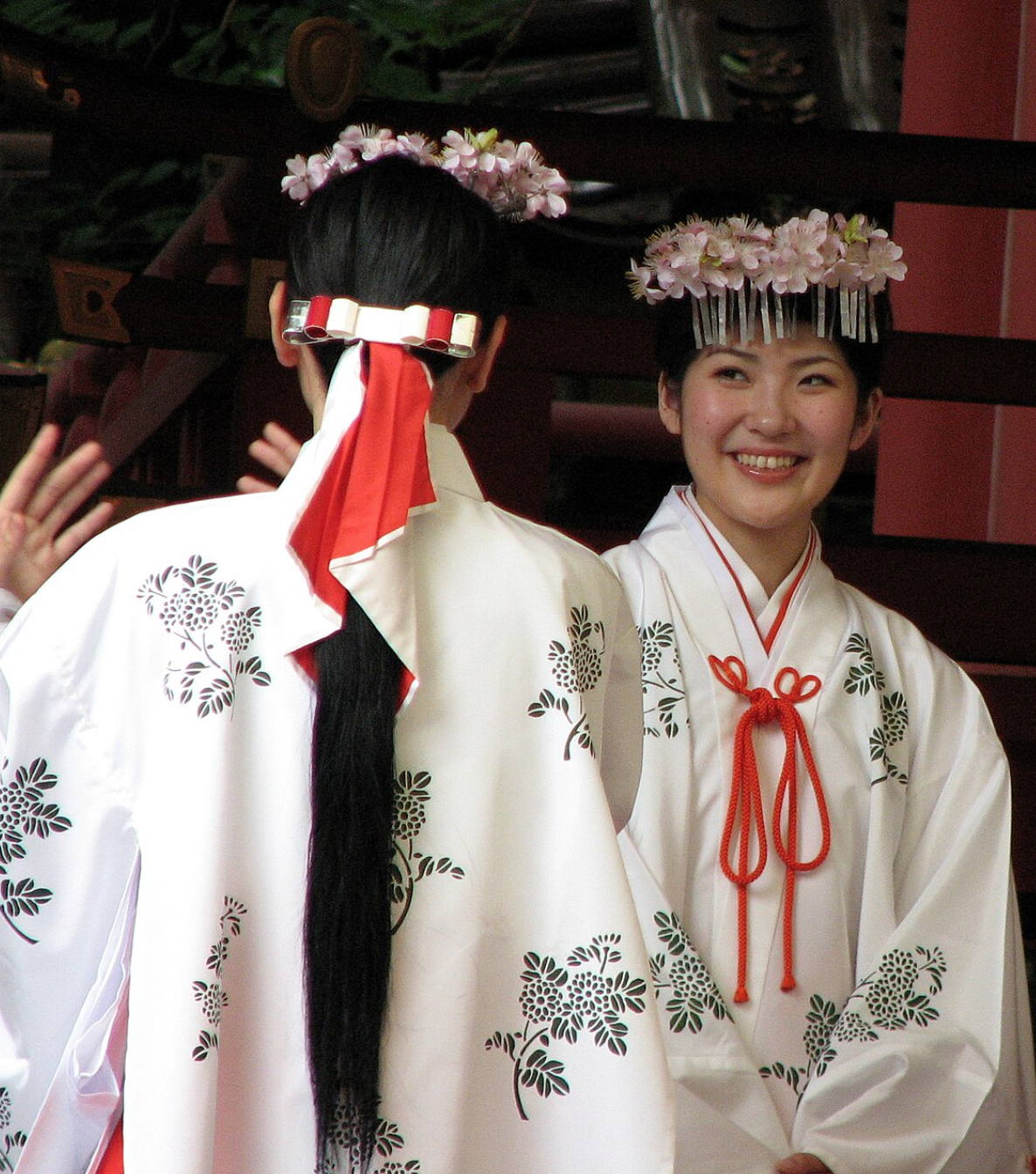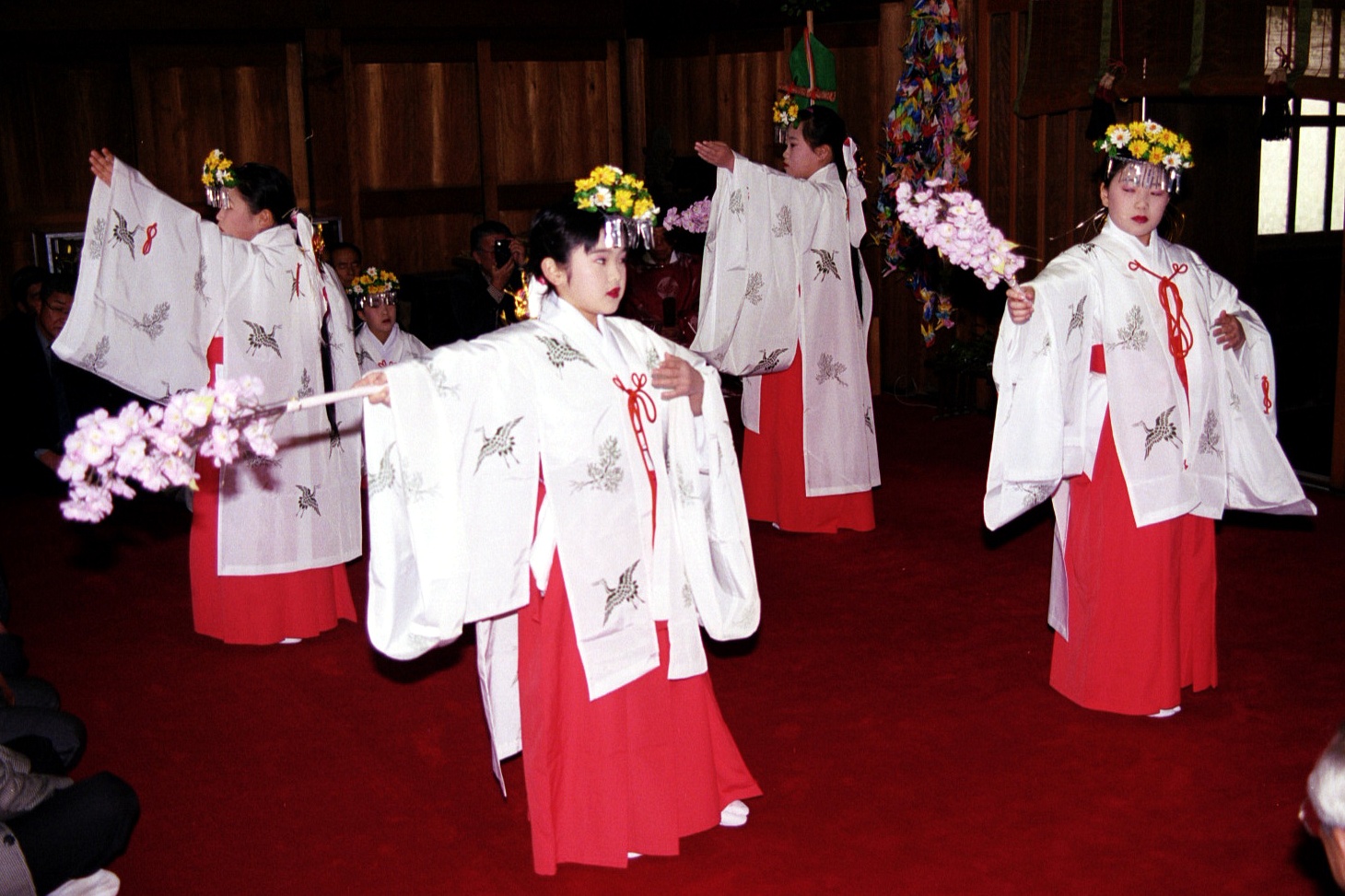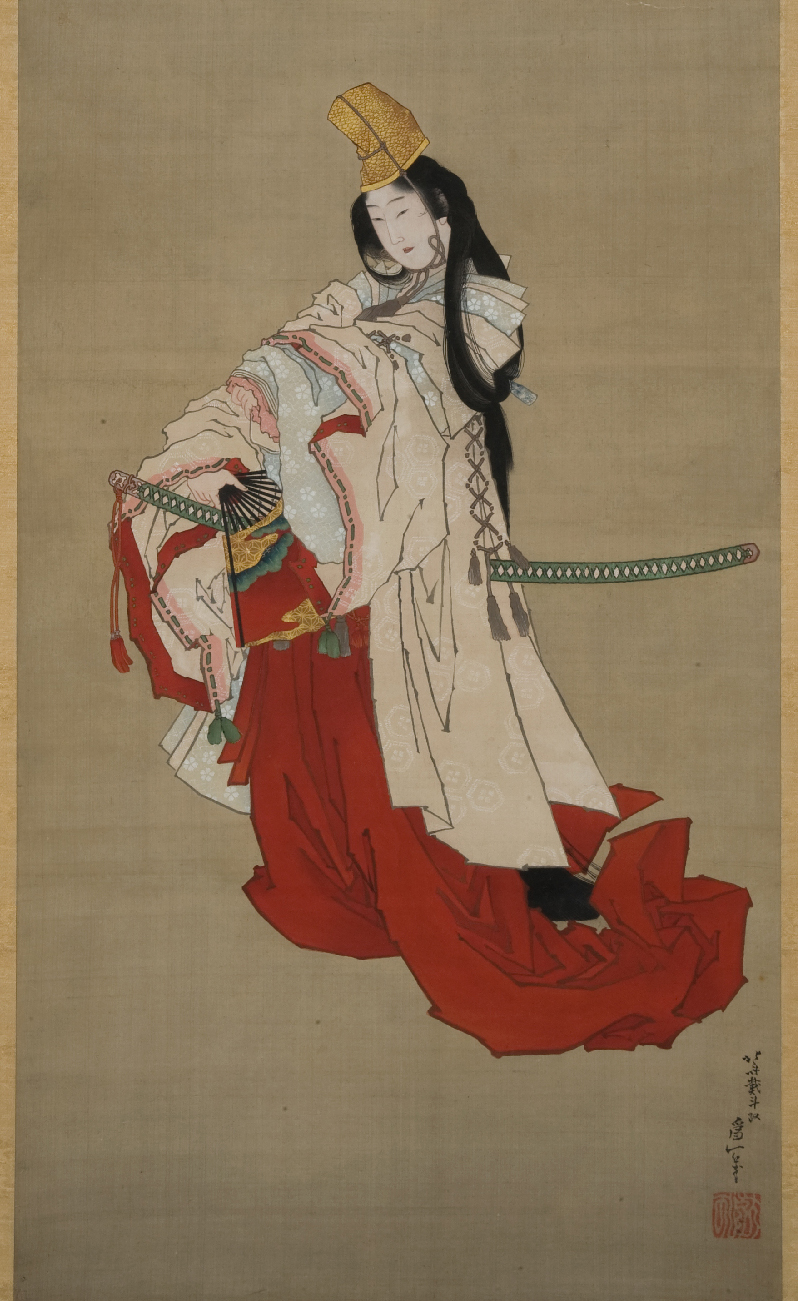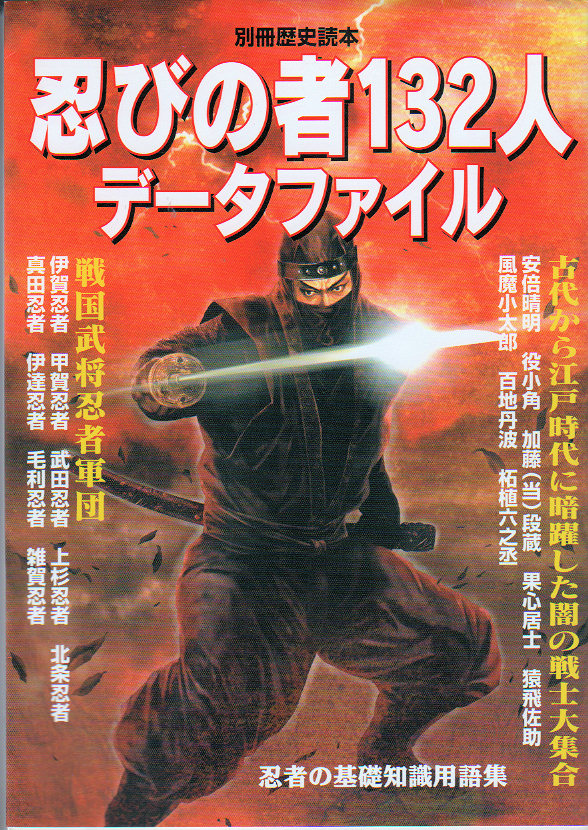武田忍者 Takeda Ninja (Page 104-106) from the book Bessho Rekishi Dokuhon Vol. 72 – Shinobi no Mono 132-nin Data File. Written by 宗方翔 Munehō Shō (Scenario Writer).
▽ Takeda Ninja – In the Sengoku Jidai, shrine maidens conducted spy activities…!?

In the 1991 special issue of “Rekishi Dokuhon,” “Definitive Edition: All About Ninjas,” there was a description by 名和弓雄 Nawa Yumio about the female spies 歩き巫女 Aruki Miko nurtured by 武田信玄 Takeda Shingen. For me, who only knew shrine maidens as those in white robes and red hakama or as dubious fortune-tellers, the theory that shrine maidens equaled kunoichi, ninja, was very intriguing, and as I was searching for material for historical novels, I promptly visited Nawa’s residence to hear his story and went to the site.
The training center for these female ninjas, “甲斐信濃巫女道修練道場 Kai Shinano Miko-dō Shūren Dōjō,” was in 信州小県郡祢津村古御館 Shinshū Chikuma-gun Netsu-mura Furumidate (Nagano-ken Tōbu-chō). Now it is 田中駅 Tanaka-eki on the Shin’etsu Line. About thirty minutes from Karuizawa by local train, it is a hilly area along the 千曲川 Chikuma-gawa.
However, the target dojo was already gone without a trace, and even its location could not be identified. Instead, in 古御館 Furumidate, there remained a house said to be inhabited by shrine maidens. A small house built in the style of an old farmhouse, nearly a ruin, but several such houses were clustered along a narrow path.
According to 中山太郎 Nakayama Tarō’s “日本巫女史 Nihon Miko Shi” (History of Japanese Shrine Maidens), this path was once called “ののう小路 Nonō Kōji,” and the surrounding area formed a large settlement of shrine maidens’ houses, called “ののう屋敷 Nonō Yashiki,” bustling with activity.
ののう Nonō is a unique local term for shrine maidens, from the phrase “nō, nō” used when addressing people. Also, it seems to derive from the custom of calling deities “のんのんさま Nonnon-sama.”

In other words, shrine maidens who performed rituals for the sick and divined the past and future for the troubled were considered to exist between gods and humans, thus called ののう Nonō.
“Female” in ancient times entrusted politics to male kin, secluded themselves deep in palaces to serve gods, and conveyed divine oracles to people, like queens of a nation. 魏志倭人伝 Gishi Wajin Den’s 鬼弥呼 Himiko. In the era of 応神天皇 Ōjin Tennō, 神功皇后 Jingū Kōgō (169–269 CE), who long served as regent, is such an example, and this tradition extended to the female emperors 推古 Suiko, 皇極 Kōgyoku, 持統 Jitō. However, as time passed, the nature of “female” changed, and in the 平安時代 Heian Jidai (794–1185 CE), when Shugendō and Onmyōji appeared and the divination techniques of Yin-Yang Five Elements theory became popular, the power of shrine maidens, who mediated divine will, declined.

Then, from the 源平 Genpei battles (1180–1185 CE) to the 戦国時代 Sengoku Jidai (1467–1603 CE), as samurai rose, female power waned, and shrine maidens’ activities transformed into singers of 今様 Imayō or 白拍子 Shirabyōshi, and further into 出雲の阿国 Izumo no Okuni’s female kabuki in later generations.
However, during political or social upheavals, shrine maidens’ divine prophecies captured people’s hearts, always fulfilling some role. For example, in 壬申の乱 Jinshin no Ran (672 CE), the oracles of local shrine maidens allied with the 吉野軍 Yoshino-gun were referenced for strategy, and one oracle included enemy country information, contributing to victory. It is likely that shrine maidens infiltrated enemy territory for espionage. It feels like the origin of the 歩き巫女 Aruki Miko used by 信玄 Shingen for intelligence activities, which is intriguing.
Takeda Ninja (Page 104-106) written by Munehō Shō for the Bessho History Reading Book No. 72 – Data file of 132 Ninjas.
I could not find much information about this book, who wrote it or the publisher. It looks like it was published as a history book/magazine published monthly.
Being the 72’nd book I guess it has been around for many years, the web site jinbutsu.co.jp is dead so I don’t know much about the publisher.

Published May 2001
228 pages
ISBN-10 : 4404027729
ISBN-13 : 978-4404027726